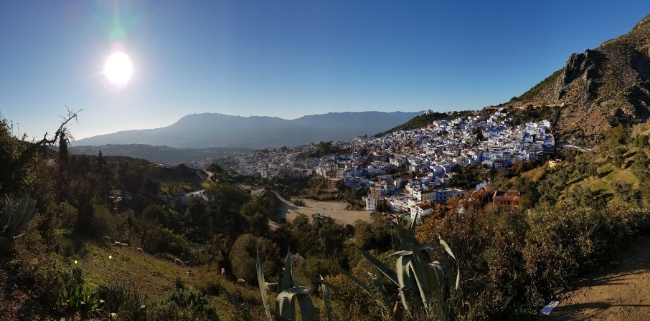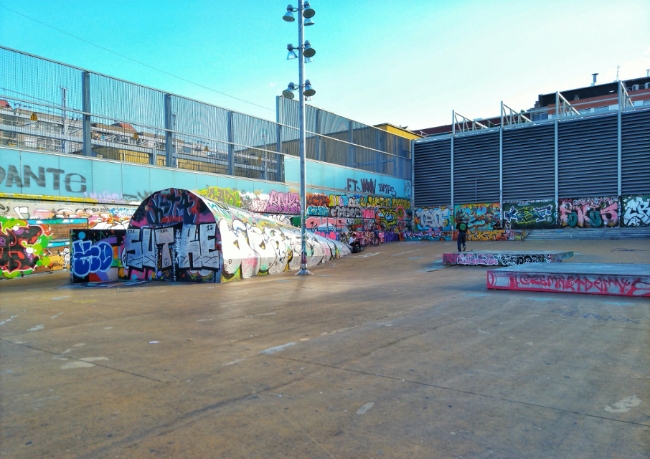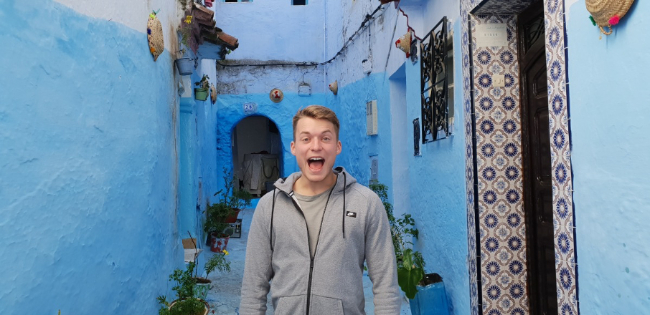
Personalization as a Key to Sustainable Travel
Everyone has their own favorite style of traveling and so does each of our team members! In this new series, you will see how the people behind The Trip Boutique enjoy exploring the world. Today we introduce our team member Kevin who has been part of The Trip Boutique for over a year. He has also recently majored in Tourism, writing his final thesis on the link between personalized travel and sustainability. Below you can learn more about Kevin's view on overtourism and his tips on traveling in an environmentally as well as socially sustainable way.
Set out with The Trip Boutique and get personalized recommendations worth one full day of travel for free!

Living the Simple Life
Harald Zeiss, a German tourism expert, once said that there is no problem with tourism saturation, there is only the problem of bad management. ‘His words made me realize that managing the tourist flow sustainably is a good way to distribute wealth and improve the quality of life in a destination,’ says Kevin. He also adds: ‘Although some people associate tourism with something negative, to me it is a neutral term.’ However, having lived in Barcelona for four months, Kevin experienced many adverse reactions to tourism. ‘When local meeting points turn into popular Instagram backdrops, it is understandable that the people actually living there become fed up with tourists. So yes, tourism can have a negative impact, but I am still convinced that if it is managed right, it brings some amazing advantages both to the travelers and the locals.’

Plaza del Sol in Vila de Gràcia, Barcelona's historic neighborhood, is perfect for strolling through its picturesque streets and taking in the local way of living.
According to Kevin, enjoying the simple life in a destination is a subtle yet great way to reduce congestion and other negative side effects of tourism. ‘Personally, I like to avoid big tourist sights if I can. Instead, I prefer to simply stroll around, do some people-watching, and take in the atmosphere.’ In Barcelona, one of the places that left a lasting impression on Kevin he actually discovered by accident. ‘It was just a small bookshop hidden somewhere in the Gothic Quarter. It didn’t even have a sign and looked more like a living room than an actual shop. The owner didn’t try to sell us anything, he was just sitting on the sofa and reading. It might not sound very extraordinary, and yet something about the simplicity of the whole scene really stuck with me.’ Sometimes it’s indeed the little things.
Prioritizing Sustainable Organizations
Of course, no one can or should expect that people won’t come to see some of the most iconic and impressive sights Barcelona has to offer – like Sagrada Familia or Park Güell. As Kevin points out, it is only natural that there is more pressure around important sightseeing spots. Again, it depends on how the tourist flow is managed. ‘Instead of introducing strategies, such as limiting capacity or increasing the price of entry fees, which would privilege certain people while excluding others – including locals! – from enjoying popular locations, I believe that with the right infrastructure or specific time slots when people can visit the sights, the congestion could be relieved.’
Kevin hopes that the travel industry will eventually prioritize quality as well as sustainability, and eliminate providers who do not comply with these values. ‘Bad products include everything that harms nature and people. I wish that travel agencies and other marketers would only promote places that offer good working conditions and fair salaries to its employees, do not lower quality of life by noise or waste, and do not disrespect local cultures, such as folk traditions or religious customs.’

Personalization might help preserve popular places, such as Morocco's famous Blue City, by distributing the tourist flow to different areas with and around the town.
Whether this vision will become a reality depends not only on how much pressure the local people exert on city councils, waste management, and other organizations but also on the choices tourists themselves make. Fortunately, socially, economically as well as environmentally sustainable travel comes in many shapes and sizes. ‘When I was living in Barcelona, I took advantage of the change in my environment and routine and decided to adopt a more plant-based diet.’ Kevin’s favorite place to eat during that time was Quinoa Bar Vegetarià. ‘The greatest thing about it – besides the food – was that they only had a few tables there so you would eat your meal together with other customers as a community.’ Consequently, Kevin’s intention to reduce the environmental costs of meat production had some pleasant side effects: it resulted both in him supporting a local business and a cultural exchange with the locals.
Personalizing Travel
The word ‘tourism’ encompasses a wide range of travel styles; but in general, there are two main types: institutionalized and non-institutionalized travel. ‘Most of the time, most people, including myself, fall into the first category – they are individual mass tourists. And that’s fine. Not everyone has to be a backpacker traveling solo through the jungle. The key, really, is to approach travel in a more personalized manner.’

Paral-lel, Barcelona's skate park near El Raval, is close to the center and is yet seldom discovered by tourists. Personalization might change that, matching skaters or street art lovers with this hip spot.
According to Kevin, personalization is not only the future of tourism but also the solution to some of its problems. ‘From a destination perspective, personalization allows gathering data on a variety of interests tourists have. This, in turn, helps local tourism boards to determine which other locations they should advertise in addition to the main sights. As a result, they can steer the tourism flow away from the main attractions towards different areas of a destination,’ says Kevin. Additionally, travelers also profit from personalization, as they save time on research and get to see and experience what truly sparks their interest – in an authentic way. ‘Personalized travel with the focus on local culture is a game-changer both for the individuals and the community. From a transnational perspective, a meaningful cultural exchange can help us fight global problems such as xenophobia or racism.’
Appreciating Local Craftsmanship
Although Kevin believes that tourism has the potential to rejuvenate local culture by facilitating intercultural understanding and helping locals grow their own businesses, he admits that if we focus on revenue only, the local products are in danger of becoming uncultured. ‘This is why I, for example, avoid buying mass-produced souvenirs. Personally, I don’t see the appeal of owning something that was created just to be sold.’ In contrast, Kevin prefers to invest his money in artifacts that locals crafted not only for the purpose of consumption but also to showcase the local culture and pass on their traditions. In other words, they put their heart into the craftsmanship.

Kevin in Chefchaouen, Morocco's Blue City.
The act of buying local souvenirs – the last one Kevin bought was a handmade pipe – also constitutes a vital part of the traveling experience. ‘When I visited Morocco, I was surprised at how openly people approached me on the street. Gone was the timid distance I encounter at home. Instead, people would just pull you inside their shops. If you don’t freak out, bargaining with the shop-owner can actually be a pretty fun experience because you end up covering hundreds of different topics.’ While some discussions Kevin describes as outright “crazy”, others were more serious. ‘I learned that young people in Morocco are very positive with regard to their country’s future. They truly believe that they have the power to change things for the better. I think this kind of optimism is missing in Europe.’
